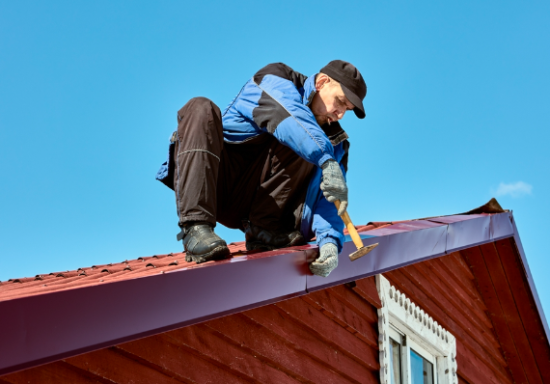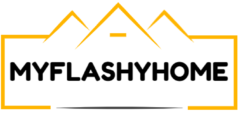
When it comes to maintaining your home, one of the most crucial aspects is ensuring that your roof remains in good shape. Roof leaks can cause extensive damage, particularly during the shingle replacement process, which is often undertaken to enhance the roof’s durability and aesthetic appeal.
Understanding Roof Leaks During Shingle Replacement
When embarking on a shingle roof replacement, you’re likely aware that various challenges could arise, including roof leaks. Understanding the nature of these leaks is crucial to ensure a smooth replacement process. Roof leaks can occur during the replacement for several reasons, often stemming from the removal of old shingles and underlayment. This process exposes the underlying structure, making it vulnerable to rain and other elements.
Additionally, the weather conditions during the replacement can significantly impact your roof’s integrity. If you’re replacing your shingles during a rainy season or unexpected downpours, the risk of leaks increases. Moisture can seep into your home, causing further damage if not promptly addressed. As you prepare for the shingle roof replacement, understanding these potential leaks helps you take proactive measures to mitigate any damage.
Moreover, the skill and experience of the roofing contractor play an essential role in preventing leaks. A reputable contractor will know how to effectively manage the replacement process, including ensuring proper sealing and flashing. By choosing a qualified professional, you’re not only investing in quality workmanship but also in peace of mind during the replacement.
Common Causes of Leaks During the Replacement Process
Several factors contribute to leaks during a shingle roof replacement. Here are some common causes that you should be aware of:
- Improper Removal of Old Shingles: If shingles are not carefully removed, the underlying materials can be damaged, leading to leaks.
- Damaged Underlayment: The underlayment acts as a barrier against moisture. If it’s compromised during the replacement, leaks can develop.
- Flashing Issues: Flashing is crucial for directing water away from critical areas such as chimneys and valleys. Poorly installed or damaged flashing can result in leaks.
In addition to these factors, the timing of your replacement project is vital. If you’ve scheduled your replacement during a season known for heavy rainfall or storms, the likelihood of encountering leaks increases. Moreover, the age and condition of your roof before replacement can also play a role; older roofs are often more susceptible to damage during the replacement process.
Lastly, human error during installation cannot be overlooked. Mistakes such as misaligned shingles or improper sealing can create pathways for water to enter your home. Recognizing these common causes help you prepare for and anticipate potential issues during your shingle roof replacement.
Preparing Your Home for Shingle Roof Replacement
Preparation is key to a successful shingle roof replacement. Begin by assessing the condition of your existing roof and the surrounding areas. Remove any items from your yard that could be damaged by falling debris, such as patio furniture and potted plants. This step ensures that your property is safe and minimizes the risk of damage during the replacement process.
Next, consider covering any sensitive areas of your home, especially those directly beneath the roof. Plastic sheeting can be an effective barrier against accidental leaks. If possible, move items stored in your attic or top floors to safe locations to prevent any water damage should a leak occur during the replacement.
Communication with your contractor is also essential during this phase. Discuss your concerns about potential leaks and ensure they have a plan in place for unexpected weather conditions. A reputable contractor will be prepared with tarps and other protective measures to shield your home from the elements during the replacement. By taking these preparatory steps, you can significantly reduce the chances of leaks disrupting your shingle roof replacement.
Temporary Leak Prevention Measures During Installation
While your new shingles are being installed, it’s crucial to have temporary measures in place to prevent leaks from occurring. One effective approach is to use tarps to cover areas of the roof that have been stripped of old shingles. This temporary shield will protect the underlying materials from rain and moisture until the new shingles are fully installed.
Another useful tactic is to ensure that the installation process is conducted in sections. By working on one part of the roof at a time, the contractor can minimize the area exposed to potential leaks. This strategy not only reduces the risk of water intrusion but also allows for quicker completion of each section, thereby limiting the time your home remains vulnerable.
Additionally, closely monitor the weather forecast during the replacement. If rain is expected, encourage your contractor to implement extra precautions, such as stopping work temporarily until the weather improves. A professional contractor will understand the importance of these measures and will be willing to adapt their workflow to ensure your home remains protected throughout the shingle roof replacement.
Steps to Address Unexpected Leaks During Replacement
Despite careful preparation and execution, unexpected leaks may still occur during your shingle roof replacement. If you notice a leak, it’s essential to act quickly to minimize damage. First, identify the source of the leak. This can sometimes be done visually; however, if the leak isn’t apparent, consult your contractor immediately. They will have the expertise to locate the source and provide solutions.
Once the leak is identified, your contractor should take immediate action to mitigate the problem. This might involve placing temporary tarps over the affected area or sealing leaks with roofing cement. Ensure that you remain in communication with your contractor during this process, as they may need your input or assistance in addressing the issue.
After the leak has been addressed, it’s crucial to document the incident. Take photos and notes regarding the leak’s location and any temporary measures taken. This information will be helpful for future reference, especially if further issues arise after the completion of the shingle roof replacement. By remaining proactive, you can better ensure the longevity and effectiveness of your new roof.
Post-Replacement Inspection and Leak Detection
After your shingle roof replacement is complete, a thorough inspection is essential. This step ensures that all work has been performed correctly and that no leaks have been overlooked. As the homeowner, it’s wise to schedule a professional inspection to assess the quality of the installation. A qualified inspector will examine areas such as flashing, seams, and ventilation systems, looking for any signs of potential leaks.
During this inspection, be attentive to any unusual signs in your home, such as water stains on ceilings or walls. These indicators may suggest that leaks have occurred during the replacement process, even if they weren’t immediately apparent. If you notice any signs of leaks, report them to your contractor promptly. They should be willing to return and address any issues that may have developed after the installation.
In addition to professional inspections, consider conducting your own visual checks periodically. Climbing onto your roof (with safety precautions) or using binoculars from the ground can help you spot any potential issues. Timely inspections and proper maintenance can significantly extend the lifespan of the roof, reducing the likelihood of water infiltration and other structural issues that may result from neglect.
Insurance Considerations for Leaks During Roof Work
Navigating insurance claims related to roof leaks can be complex, especially during a shingle roof replacement. It’s vital to understand your policy’s coverage regarding roof leaks and repairs. Many homeowners’ insurance policies cover damage caused by sudden and accidental leaks, but there may be exclusions for damage that occurs as part of routine maintenance or replacement.
Before beginning your shingle roof replacement, contact your insurance provider to clarify your coverage. Ask them about the process for filing claims related to leaks during the replacement. This proactive approach ensures that you’re informed and prepared should any unexpected leaks occur.
Additionally, keep thorough records of all communications with your contractor, including photographs of the roof’s condition before, during, and after the replacement. These documents can serve as crucial evidence if you need to file a claim for damage that occurs during the replacement process. By staying organized and informed, you can navigate the insurance landscape more effectively.
Summary
Handling roof leaks during the shingle roof replacement process requires careful planning and proactive measures. By understanding the common causes of leaks and preparing your home ahead of time, you can significantly reduce the likelihood of unexpected issues. Temporary leak prevention measures, quick responses to leaks, and thorough inspections post-replacement will also contribute to a successful installation process.
